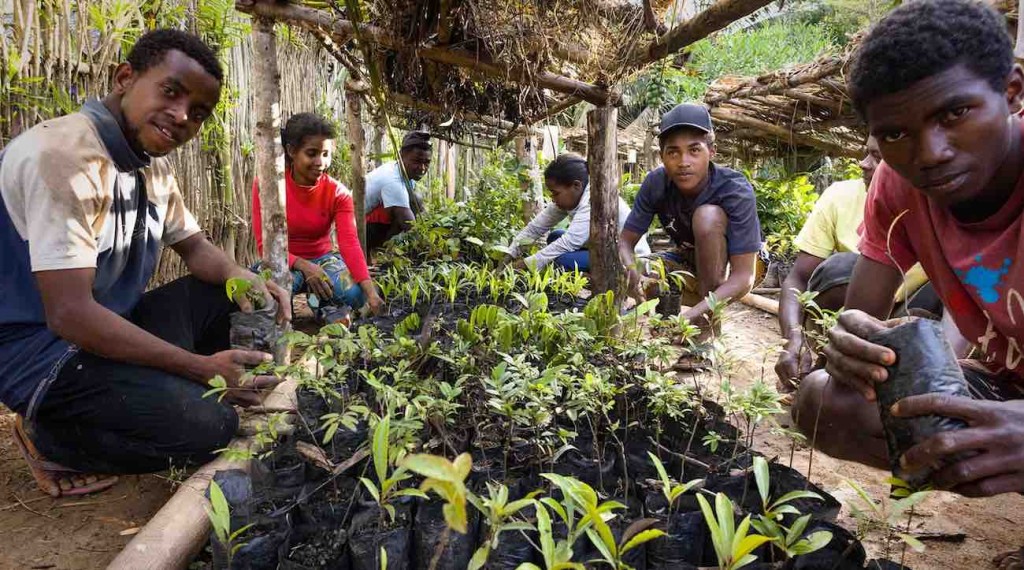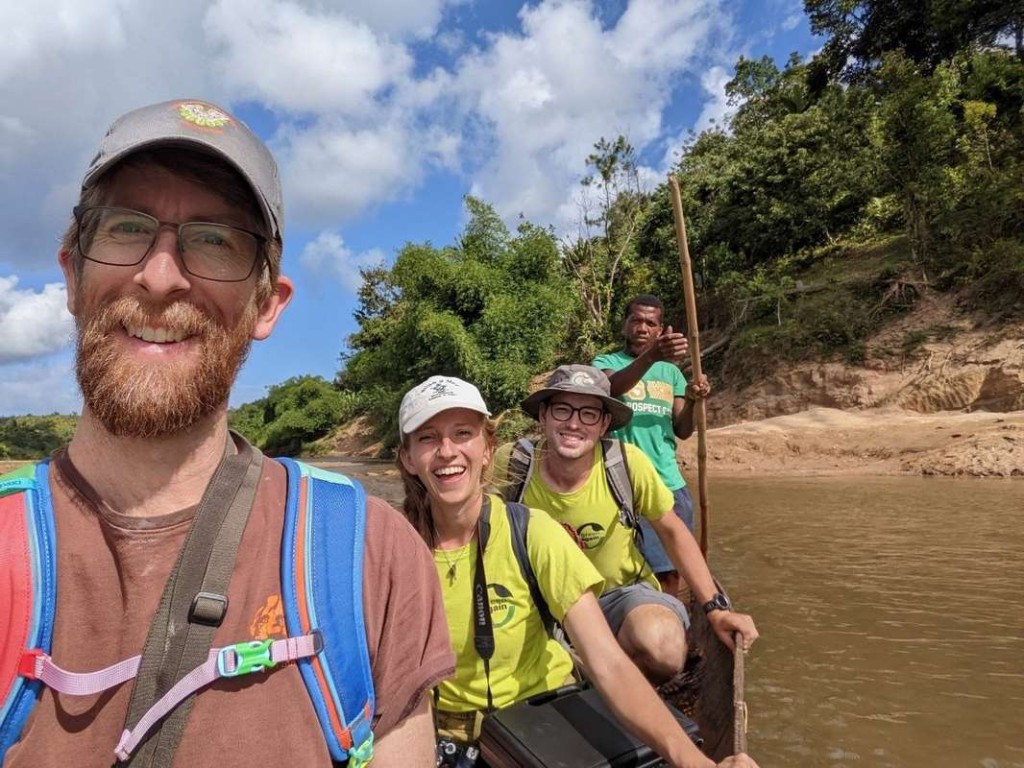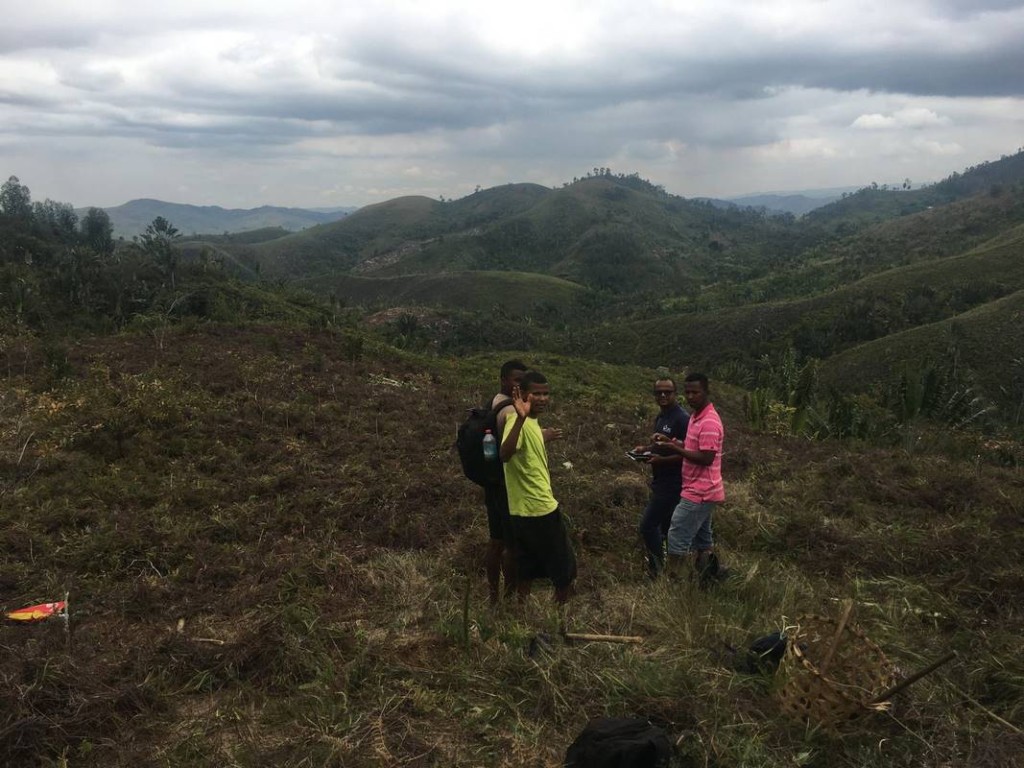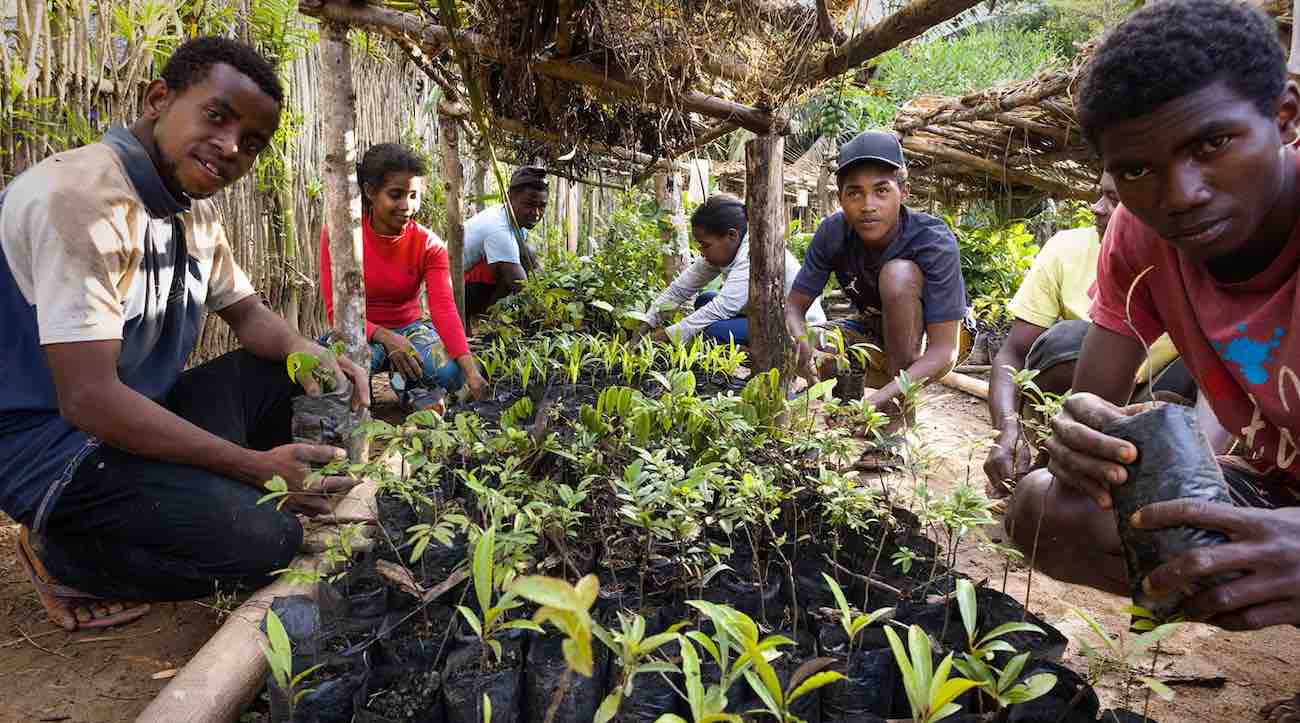
Reprinted with permission from World at Large, an independent news outlet covering conflict, travel, science, conservation, and health and fitness.
This is Part 2 of a two-part exclusive on World at Large. Some sections are taken from Part 1, published in April.
Out in the ultra-rural jungles of eastern Madagascar, something is happening that all climate-conscious philanthropists and investors should take note of.
A few intrepid locals have created a 6-year, work-for-knowledge program that’s turning jobless country folk into passionate, skilled, forest management agents and entrepreneurs, ready to show the world that they themselves have the power to restore the glory of Madagascar’s stunning biodiversity.
Organized by a Malagasy woman and her Wall Street ex-pat husband, Green Again Madagascar is unlike any other tree-planting nonprofit around.
“It’s really exemplary of bottom-up restoration,” Leighton Reid, assistant professor in the School of Plant and Environmental Sciences at Virginia Tech, who conducted research for the group, told WaL.
Restoration success in Madagascar is simply different than in other countries. Madagascar split from the Indian subcontinent around 90 million years ago, allowing native plants and animals to evolve in relative isolation. Consequently, it’s a biodiversity hotspot with over 90% of wildlife being endemic.
More than 80% of Madagascar’s 14,883 plant species are found nowhere else in the world, a number which includes five whole plant families.

Yet, none of this staggering biodiversity has been able to create enough urgency among conservation NGOs to develop a functional plan to stop forest loss in the country. A study published alongside Part 1 of this WaL exclusive showed that Madagascar had lost 4.85 million hectares of tree cover since 2000, equivalent to a 25% national loss.
Yet this isn’t always because of macro problems like a lack of funding, organization, or accountability. Assistant Professor Reid worked with Green Again Madagascar to gather data on how to germinate and grow various species.
“There are major technical challenges to reforestation in Madagascar, Madagascar has about 90% plant endemism, so if you’re trying to do reforestation in Madagascar, and nobody has studied how to propagate a given tree species, you can’t borrow that information from Mozambique or South Africa,” assistant professor Reid told WaL.
How to truly make a forest
Matt Hill, the CEO and Founder of Green Again Madagascar, explained that most organizations have the time and patience to plant an average of 5 species when reforesting elsewhere on the island. Green Again’s inventory, thanks in no small part to the near total staffing of the organization by Malagasy, consists of 65 species.
In order to gather data on how to ensure these trees can survive long enough so they don’t bring the whole reforested ecosystem down with them when they die, Reid, who had gotten to know Hill some years before, came out to work with Green Again in 2014-2015 to see if they could establish best practices for 17 different species.
They tried a variety of different techniques and strategies to see if they could get the trees to survive transplantation from the nursery which included additional watering, nutrient amendments, and placement around a host tree. Key among the successful strategies was the timing of planting—between October and January.
Trees planted during this 3-month window when the weather was perfect had about a 90% survival rate. Too late, and they would be drowned during the monsoon season, too early and they would fail to drought. This also means that fewer trees can be kept in nurseries since there’s nothing to do with those that aren’t planted during that 3-month window.
The only other consistently successful treatment was the construction of a small tee-pee of fronds that shaded the saplings during the hottest time of the day.
“We assumed almost that having some shade was going to be helpful, and that was based on the knowledge of local Malagasy farmers, they build these little tee-pees from fern leaves on top of their crops when they plant them, and it seems to help that,” Reid told WaL. “Trees that had those little fern tee-pees were 75% less likely to die”.
It all goes to show how difficult tree planting and reforestation—now so widely practiced as a climate mitigation strategy, can actually be, if any long-term thought of the quality of the forest and its trees is given.
Certain species fared better than others, and the data isn’t always clear why.
“Trema orientalis: it had a 94% survival after 1 year, and 0% after 6 years. That’s considered a success,” Reid explains, differentiating between ‘pioneer species’ and longer-lived ones. “If we were to see that in different species—Ficus species, 66% survival after 1 year, 0% after six years… in my mind that’s a failure”.
However, he’s confident that their data combined with Green Again’s intellectual capital on tree planting is enough to ensure replanted forests endure.
WaL asked Reid if he was able to communicate with any of the local landowners whereupon the restoration project and research were being done about why it was they were interested in restoring it.
“I think there’s some nostalgia, especially among older people, for the biodiversity that’s gone. You also hear people talk about how they used to go out and get medicines from the forest, and that they can’t do that anymore”.

The buy-in cost and helping animals
As detailed in Part 1, Green Again Madagascar can achieve reforestation where and how no other organization can because they have the complete buy-in from the locals, with the average tree nursery crew member living within a 60-90 minute walk from the nursery in the extremely rural eastern reaches of the country.
However, accompanying that extreme locality is the necessity to work where the locals are—places where animals like lemurs haven’t been seen in a generation or more. These areas might have been burned for agriculture again and again, then abandoned or turned into marginal village land rather than being allowed to regrow naturally.
Because of this, there has been little history of protocol for interactions between Green Again’s teams and any of the iconic animals of Madagascar like the fossa, lemurs, and chameleons.
“Most of our farmers live in places without any animals, but now we’re starting some new experiments that are appropriate for doing just outside national parks, and the reason is that it depends on the animals,” explained Green Again CEO Hill. “You’ve got to tease the animals out”.
When not planting trees for corporate or Malagasy customers, Hill and Green Again have had time and resources to carry out projects on behalf of the wildlife called “applied nucleation,” a method of assisted natural regeneration that relies on creating small islands of woody pioneer plant species a short distance from existing wildlife habitat that mimics how vegetated areas naturally expand in nature.
It encourages seed dispersers like rodents, birds, moths, and bats, to adventure out into the island to help propagate the areas around it.
“We’ve been doing applied nucleation for four years now but never on a large-scale, only two or three islands. This year, we’re doing 141 islands, and next year we’re [doing…] 244,” said Hill. “By 2030, we should be doing 1 kilometer by 1-kilometer square, which is huge”.
Compared to simple plantation-style reforestation, biodiversity of birds is the same between applied nucleation and plantation-style islands, one study found—also published by Leighton Reid. The concentration of leaf-litter anthropods however, is much higher in applied nucleation islands rather than plantations. Plantations were also significantly more expensive.
“Historically, we’ve been about the trees, and we’re trying to concentrate on that because there’s so much [international] attention on the animals but not on where they live. Now… we’re putting the necessary tools out there for the lemurs to save themselves”.
The Malagasy government has made large pledges to the international community about how much of its own forests it will restore—up to 9.8 million hectares over the next 10 years. The administration of President Andry Rajoelina could do very well for these goals by looking within its own borders for guidance, capacity, and know-how for such a project rather than toward the West.
Green Again Madacasgar is changing the world in the way every bloated-budget development organization says its own various uncoordinated agencies should—through engagement with local stakeholders.
An organization cannot be more local, and their locals more of a stakeholder, than Green Again Madagascar.
SHARE This Inspiring Madagascar Solution With Your Friends…




















